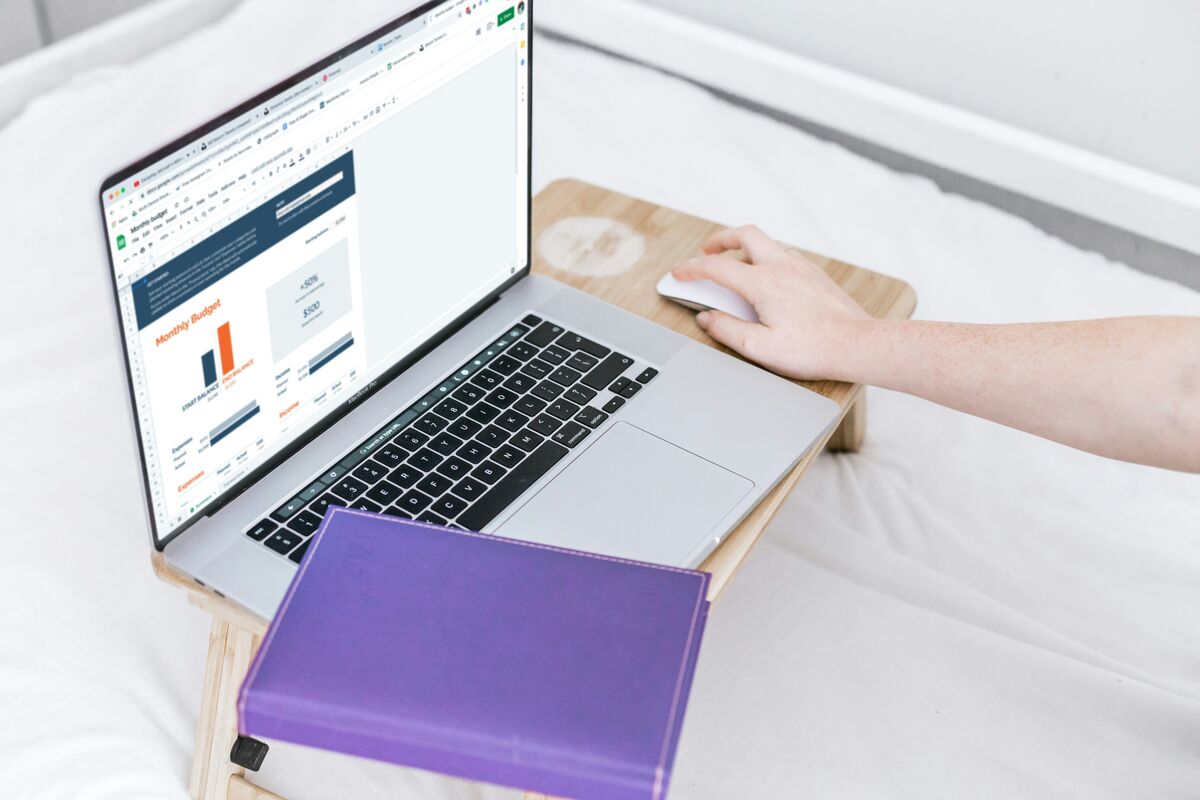Zero-Based Budgeting: A Complete Guide for Latin American Households
Master zero-based budgeting techniques tailored for managing finances across Mexico, Chile, and Brazil with practical examples.

Understanding Zero-Based Budgeting
Zero-based budgeting (ZBB) is a powerful financial management method where every peso, real, or Chilean peso in your income is assigned a specific purpose before the month begins. Unlike traditional budgeting methods that use previous spending as a baseline, zero-based budgeting starts from zero and justifies every expense category from scratch.
This approach is particularly effective in Latin American economies where income volatility, inflation, and currency fluctuations require precise financial control and adaptability.
Why Zero-Based Budgeting Works in Latin America
Economic Volatility Management
Latin American economies often experience:
- Currency fluctuations affecting purchasing power
- Inflation rates that can erode savings quickly
- Income volatility from informal work or seasonal employment
- Economic uncertainty requiring flexible financial planning
Zero-based budgeting addresses these challenges by:
- Forcing regular evaluation of all expenses
- Improving awareness of spending patterns
- Creating flexibility to adapt to changing circumstances
- Maximizing the efficiency of every unit of currency
Cultural Alignment
ZBB aligns well with Latin American financial values:
- Family financial responsibility - ensuring every family member’s needs are met
- Resource maximization - making the most of available income
- Emergency preparedness - building reserves for unexpected expenses
- Goal achievement - systematically working toward financial objectives
The Zero-Based Budgeting Process
Step 1: Calculate Your True Income
For Employees (Mexico)
- Gross salary minus taxes (ISR, IMSS contributions)
- Net take-home pay
- Additional income (bonuses, overtime, side work)
- Irregular income (commissions, tips)
For Employees (Chile)
- Gross salary minus taxes (income tax, health insurance, AFP)
- Net monthly income
- Variable income (performance bonuses, profit sharing)
- Other income sources
For Employees (Brazil)
- Gross salary minus deductions (IRPF, INSS, health insurance)
- Net salary after all deductions
- 13th salary (décimo terceiro) allocation
- Additional income streams
For Self-Employed/Informal Workers
- Average monthly income over past 6-12 months
- Seasonal income adjustments
- Business expense deductions
- Tax obligations and social security contributions
Step 2: List All Monthly Expenses
Fixed Expenses (Cannot Change)
- Rent or mortgage payments
- Insurance premiums
- Loan payments (auto, credit cards, personal loans)
- Utilities (basic service fees)
- Phone and internet services
- Transportation (car payments, public transit passes)
Variable Expenses (Can Change)
- Groceries and household supplies
- Utilities (usage-based portions)
- Gasoline or transportation costs
- Entertainment and dining out
- Clothing and personal care
- Medical expenses and medications
Irregular Expenses (Plan Ahead)
- Annual insurance renewals
- Vehicle maintenance and repairs
- Medical emergencies
- Home maintenance
- Holiday and vacation expenses
- School supplies and fees
Step 3: Assign Every Unit of Currency
Income - Expenses = Zero
This is the fundamental equation of zero-based budgeting. Every peso, real, or Chilean peso must have a designated purpose:
Priority Allocation Order:
- Essential Living Expenses (50-60% of income)
- Rent/mortgage, utilities, food, transportation
- Debt Payments (10-20% of income)
- Minimum payments plus extra principal
- Savings and Emergency Fund (10-20% of income)
- Emergency fund until 3-6 months of expenses
- Long-term savings and investments
- Personal and Family (10-20% of income)
- Entertainment, dining, personal care, clothing
- Future Goals (5-10% of income)
- Vacation fund, home down payment, education
Country-Specific Zero-Based Budgeting Strategies
Mexico: Managing Peso Volatility
Budgeting Considerations
- USD Expenses: Some expenses (rent, loans) may be in dollars
- Inflation Impact: Adjust budget monthly for price increases
- Income Timing: Biweekly vs. monthly payment cycles
- Family Support: Extended family financial obligations
Sample Monthly Budget (MXN 25,000 net income)
- Housing (30%): MXN 7,500 (rent, utilities, insurance)
- Food (15%): MXN 3,750 (groceries, occasional dining)
- Transportation (12%): MXN 3,000 (car payment, gas, maintenance)
- Debt Payments (10%): MXN 2,500 (credit cards, personal loan)
- Savings (15%): MXN 3,750 (emergency fund, investments)
- Personal/Family (13%): MXN 3,250 (entertainment, clothing, gifts)
- Insurance/Healthcare (5%): MXN 1,250 (health, life insurance)
Inflation Adjustment Strategy
- Review and adjust budget monthly
- Prioritize fixed-rate debt payments
- Build larger emergency funds (6+ months)
- Consider USD savings for major purchases
Chile: AFP and Tax-Efficient Budgeting
Unique Considerations
- AFP Contributions: 10% of salary automatically deducted
- Health Insurance: FONASA or ISAPRE payments
- Seasonal Income: Many jobs have seasonal variations
- Education Costs: High private education expenses
Sample Monthly Budget (CLP 800,000 net income)
- Housing (35%): CLP 280,000 (mortgage, common expenses, utilities)
- Food (12%): CLP 96,000 (groceries, some restaurant meals)
- Transportation (10%): CLP 80,000 (car expenses, public transport)
- Education (8%): CLP 64,000 (children’s school, courses)
- Savings (15%): CLP 120,000 (APV, emergency fund, investments)
- Healthcare (5%): CLP 40,000 (additional health insurance, medical)
- Personal/Family (15%): CLP 120,000 (entertainment, clothing, misc)
Chilean-Specific Strategies
- Maximize APV contributions for tax benefits
- Plan for annual property tax and car permits
- Consider UF-indexed savings for inflation protection
- Budget for earthquake insurance and emergency preparedness
Brazil: Complex Tax and Benefit Planning
Brazilian Complexities
- 13th Salary: Extra salary payment in December
- FGTS: Employer fund contribution management
- Vacation Pay: 1/3 additional vacation bonus
- Complex Tax System: Multiple tax rates and deductions
Sample Monthly Budget (BRL 8,000 net income)
- Housing (30%): BRL 2,400 (rent, condominium, utilities)
- Food (18%): BRL 1,440 (groceries, meals out)
- Transportation (12%): BRL 960 (car, fuel, public transport)
- Healthcare (8%): BRL 640 (health insurance, medications)
- Savings (15%): BRL 1,200 (poupança, investments, PGBL)
- Personal/Family (12%): BRL 960 (entertainment, clothing, personal)
- Education (5%): BRL 400 (courses, books, children’s education)
Brazilian-Specific Strategies
- Plan separate budget for 13th salary windfall
- Maximize PGBL contributions for tax deductions
- Use high-yield savings accounts to combat inflation
- Budget for Carnaval and holiday expenses
Advanced Zero-Based Budgeting Techniques
The 50/30/20 Zero-Based Hybrid
Combine ZBB principles with the popular 50/30/20 rule:
- 50% Needs: Housing, food, utilities, minimum debt payments
- 30% Wants: Entertainment, dining out, hobbies, non-essential shopping
- 20% Savings: Emergency fund, retirement, debt payoff, investments
Zero-Based Application: Within each category, assign specific purposes to every unit of currency, ensuring the total equals 100% of income.
Irregular Income Zero-Based Budgeting
For Freelancers, Commission Workers, and Business Owners:
Step 1: Calculate minimum monthly income (lowest 3 months in past year) Step 2: Create baseline budget using minimum income Step 3: Create surplus allocation plan for above-minimum months
Surplus Allocation Priority:
- Emergency Fund: Build to 6-12 months of expenses
- Tax Obligations: Set aside for quarterly/annual tax payments
- Business Investments: Equipment, training, marketing
- Extra Debt Payments: Accelerate debt elimination
- Long-term Savings: Retirement, major purchases
Multi-Currency Zero-Based Budgeting
For Cross-Border Workers or Multi-Country Residents:
Currency Allocation Strategy:
- Local Currency (60-70%): Daily expenses, local savings
- USD (20-30%): International expenses, USD savings
- Other Currencies (10%): Country-specific expenses
Exchange Rate Management:
- Weekly Rate Checks: Adjust budget based on exchange rates
- Natural Hedging: Match currency of income and expenses where possible
- Forward Contracts: Lock in rates for large future expenses
- Multi-Currency Accounts: Maintain accounts in relevant currencies
Digital Tools for Zero-Based Budgeting
Spreadsheet Templates
Essential Features:
- Income tracking with multiple sources
- Expense categories with subcategories
- Automatic calculation of remaining funds
- Visual indicators for over/under budget
- Monthly comparison and trend analysis
Popular Platforms:
- Google Sheets: Free, accessible anywhere, collaborative
- Microsoft Excel: Advanced features, offline access
- Apple Numbers: Mac/iOS integration, intuitive interface
Mobile Apps
Latin America-Specific Apps:
- Mexico: Finerio, Konfío Personal, Yotepresto
- Chile: Racional, Fintonic Chile, Banco Estado app
- Brazil: GuiaBolso, Organizze, Mobills
International Apps with Latin America Support:
- Mint: Comprehensive budgeting with bill tracking
- YNAB (You Need A Budget): Zero-based budgeting focused
- PocketGuard: Simple overspending prevention
- Goodbudget: Envelope method digital implementation
Banking Integration
Account Setup for ZBB:
- Primary Checking: Monthly expenses and bills
- Savings Account: Emergency fund and short-term goals
- Investment Account: Long-term wealth building
- Separate Goals Accounts: Specific savings targets
Automatic Transfers:
- Savings: Automatic transfer on payday (pay yourself first)
- Bill Payments: Automatic payments for fixed expenses
- Investments: Regular contributions to investment accounts
- Emergency Fund: Systematic emergency fund building
Common Zero-Based Budgeting Mistakes
Mistake 1: Perfectionism Paralysis
Problem: Trying to track every small expense perfectly Solution: Focus on major categories, use round numbers, allow for small variances
Mistake 2: Unrealistic Expense Estimates
Problem: Underestimating variable expenses like food and entertainment Solution: Track actual spending for 2-3 months before creating budget
Mistake 3: No Emergency Buffer
Problem: Allocating 100% with no flexibility for unexpected expenses Solution: Include “miscellaneous” category (2-5% of income) for small surprises
Mistake 4: Ignoring Irregular Expenses
Problem: Not planning for annual or seasonal expenses Solution: Calculate monthly amounts for irregular expenses and save accordingly
Mistake 5: All Work, No Reward
Problem: Cutting all discretionary spending, leading to budget abandonment Solution: Include reasonable amounts for entertainment and personal spending
Making Zero-Based Budgeting Sustainable
Weekly Budget Meetings
Personal/Couple Check-ins:
- Review week’s spending against budget
- Discuss upcoming week’s planned expenses
- Make adjustments for unexpected events
- Celebrate successes and problem-solve challenges
Monthly Budget Review
Comprehensive Monthly Analysis:
- Compare actual vs. budgeted amounts
- Identify trends and patterns
- Adjust categories based on real spending
- Plan for next month’s unique expenses
Quarterly Strategic Review
Bigger Picture Assessment:
- Evaluate progress toward financial goals
- Assess budget effectiveness and sustainability
- Make seasonal adjustments
- Review and update financial priorities
Family Involvement
Making It a Team Effort:
- Children: Age-appropriate involvement in family budgeting discussions
- Spouse/Partner: Shared responsibility and accountability
- Extended Family: Communication about financial boundaries and expectations
- Support Network: Friends and family who support your financial goals
Emergency and Crisis Budgeting
Economic Crisis Adaptation
When Income Drops:
- Immediate Cuts: Eliminate all non-essential spending
- Renegotiate Fixed Costs: Call providers to reduce bills
- Generate Additional Income: Side gigs, selling items
- Use Emergency Fund: Systematic withdrawal plan
- Debt Management: Contact creditors for payment plans
Priority Expenses During Crisis:
- Housing (rent/mortgage, basic utilities)
- Food (focus on essentials, eliminate dining out)
- Transportation (maintain ability to work)
- Minimum debt payments (avoid default)
- Basic healthcare and medications
Inflation Response Strategy
High Inflation Periods:
- Weekly Budget Reviews: More frequent adjustments
- Fixed-Rate Debt Priority: Pay off variable rate debt first
- Essential Stockpiling: Buy non-perishables when prices are low
- Income Indexing: Negotiate salary adjustments for inflation
- Asset Protection: Consider inflation-protected investments
Advanced Goal Integration
Short-Term Goals (1-12 months)
Emergency Fund Building:
- Target: 3-6 months of expenses
- Monthly allocation: 10-20% of income
- Account type: High-yield savings, easily accessible
- Timeline: 6-12 months for full funding
Debt Elimination:
- Strategy: Debt avalanche (highest interest first) or snowball (smallest balance first)
- Extra payments: Allocate windfall and savings to debt reduction
- Timeline: Based on total debt and extra payment capacity
Medium-Term Goals (1-5 years)
Home Down Payment:
- Target: 10-20% of home purchase price
- Savings vehicle: Separate high-yield account or CDs
- Timeline: Based on desired purchase date and target amount
- Additional considerations: Closing costs, moving expenses
Education Funding:
- Children’s education or personal development
- Vehicle: Education savings accounts, investment funds
- Strategy: Monthly contributions with potential growth
- Risk management: Conservative investments for near-term needs
Long-Term Goals (5+ years)
Retirement Planning:
- Target: 10-15% of income minimum
- Vehicles: Company pension plans, individual retirement accounts
- Investment strategy: Age-appropriate asset allocation
- Regular review: Annual assessment and adjustment
Wealth Building:
- Investment accounts beyond retirement
- Real estate investment opportunities
- Business development and entrepreneurship
- Diversified portfolio management
Conclusion: Your Zero-Based Budgeting Journey
Zero-based budgeting is more than just a financial technique—it’s a comprehensive approach to intentional money management that can transform your financial life. By giving every unit of currency a specific purpose, you take control of your financial destiny and ensure that your money works as hard as you do to earn it.
The key to success with zero-based budgeting is consistency, flexibility, and patience. Start with a simple budget, refine it based on your actual spending patterns, and gradually incorporate more sophisticated strategies as you become comfortable with the process.
Remember that budgeting is not about restriction—it’s about freedom. When you know exactly where your money is going and why, you can make confident financial decisions that align with your values and goals. Whether you’re managing pesos in Mexico, Chilean pesos in Chile, or reais in Brazil, the principles remain the same: intentionality, awareness, and consistent action toward your financial objectives.
Your financial future is built one budget at a time, one month at a time, one decision at a time. Start today, stay consistent, and watch as zero-based budgeting transforms not just your finances, but your entire relationship with money.
Ready to take control of your finances with zero-based budgeting? Try Finthy to track your income and expenses across Mexico, Chile, and Brazil with built-in budgeting tools and insights.
For more budgeting strategies and personal finance tips, subscribe to our newsletter for monthly money management guidance and financial planning insights.

